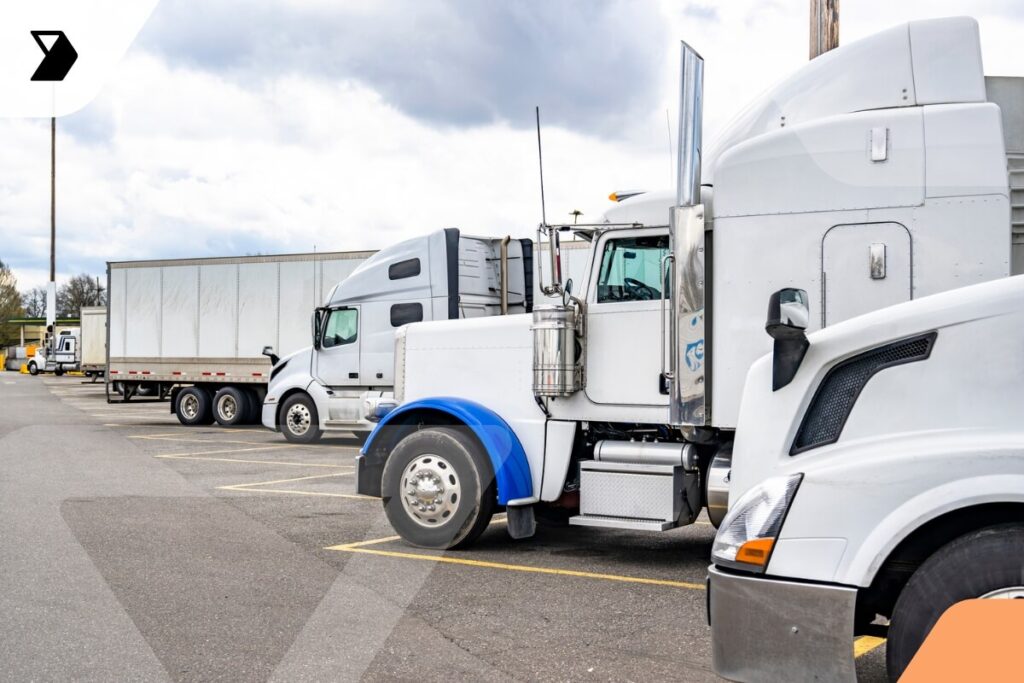Transportation Costs: 4 Ways to Reduce Them
Let's talk about transportation costs. In the post-pandemic era, everything suddenly got more expensive to ship.
Ready to transform your supply chain?

Great. We have a good idea of what’s driving transportation costs higher. So the more important question is: What can be done to reduce transportation costs?
Today, we’ll look into costs and potential reductions associated with labor, fuel, sourcing strategies, and strategic policies. Here’s a number to kick things off. According to one Wall Street Journal article, the cost of shipping a standard 40-foot container has reached as high as $20,000 for expedited shipments.
That’s a more than ten-times jump in price from the pre-pandemic costs for the same shipment from Shanghai to Los Angeles. The spike in costs has shocked the global supply chain.
What’s going on here? Are increased costs simply a result of supply and demand dynamics? Is it just backed-up global ports? Is the surge driven by a boom in e-commerce and an unbalanced trade policy with China? Or is it all of the above and more?
The question of how to reduce transportation costs is on everyone’s mind. Let’s identify and review the key factors driving costs higher. Then, let’s look for ways to reduce transportation costs. Climb aboard, fellow Earthling. This rig is moving!
What Does “Transportation Costs” Mean to You?
Of course, transportation costs mean different things to different people and businesses.
For instance, an average driver commuting to an office job may think transportation costs consist of their car payments, fuel, oil changes, and maybe the shipping fee for the fuzzy dice they ordered online. No wonder many commuters now work from home!
Example: Logistics Industry
Even in the logistics industry, transportation costs mean different things depending on your company’s role in the supply chain. One example is asset-based carriers—trucking firms that own their equipment and work directly with shippers.
For these types of carriers, transportation costs essentially account for their entire business. Every cost is transportation related. Truck payments, fuel, maintenance, driver salaries, insurance, support staff, overhead, everything! Subtract transportation costs from revenue, and hopefully that business owner has something to show for it at the end of the day.
Example: Manufacturing Industry
On the other hand, let’s say you’re an enterprise-level original equipment manufacturer (OEM) in the heavy machinery or automotive business. Carriers and their trucks get your subcomponent parts from the outsource supplier to your factory floor all day. But these types of OEMs often run transportation and logistics divisions like separate business units. For OEMs like these, transportation is simply another outsourced process, with key performance indicators and a budget to manage. In turn, buyers at OEMs negotiate the price of parts, volume discounts, lead times, design features, and paint colors.
Rethinking the Future of Transportation Costs
I understand that having the correct hue of magenta is important. But transportation costs are often left off the table during the traditional piece-price negotiation process.
In short, once shipping container prices rise tenfold, the issue of reducing transportation costs gains visibility at the highest levels of policy makers. In turn, we may see more strategic resourcing shifts to near-shore, localized supply bases. At the same time, finding labor has been an issue in the United States.
Labor Costs and Labor Scarcity
The supply chain and transportation industry certainly feel the pain of ongoing labor scarcity. The shortage of labor in the United States includes truck drivers, port employees, and general laborers across many industries. In order to fill positions, many companies are throwing money at the problem.
Many experts agree that rising wages are a good thing. We need bodies in order to ship product. No product, no customers. Therefore, the labor issue will remain a central focus during strategy sessions around the globe.
Ultimately, I think some creative adaptations will help the U.S. economy maintain its head of steam. In the meantime, there are plenty of other ways to reduce transportation costs.
So let’s dive into the things we can do today to reduce transportation costs.
Method 1: Efficient Fuel Use
Let’s start with the basics. if you’re a carrier, lowering fuel costs is the obvious way to reduce overall transportation costs. A penny saved is a penny earned.
There are many tips for improving fuel economy. Here are a few of the best:
- Trailer skirts: Skirts have been around for years now. It’s a wonder they aren’t mandatory. These reduce air drag beneath trailers. They’re relatively inexpensive and can reportedly improve fuel efficiency by 5%.
- Truck roof fairing: Similar to skirts, these improve aerodynamics between the tractor roof and the trailer, and they might as well be mandatory. Roof fairing is a bit more expensive to install than skirts. But it can improve fuel efficiency by up to 14%, according to Aerodyne.
- Fuel programs: Many trucking companies sign long-term agreements with certain fuel providers. These types of agreements can help combat fluctuating fuel prices.
- Efficient routing: GPS tools are huge for fuel economy. First of all, GPS identifies the shortest, best route. Then GPS adapts to changing traffic patterns en route to improve routing. These micro efficiencies can add up over time.
- Telematics: Telematics technology tracks and monitors driver behavior and truck health. The goal is to increase good driving habits that reduce fuel consumption. Examples of good driving habits include lower average speed, reduced idling, slower acceleration, slower braking, and shifting properly.
- Tire pressure: This is the old acorn President Barack Obama told us about years ago. Telematics systems also monitor tire pressure to ensure peak efficiency.
- Routine maintenance: Lastly, telematics also help keep truck maintenance on the ideal schedule.
Method 2: Energy Consumption in General
Beyond these obvious tricks, energy consumption is a holistic issue. Cheap energy has long ruled the industry. But ultimately, we know fossil fuel is a finite resource.
Thus, how we consume fuel matters. The issue of what types of fuel we consume matter—much more than it ever has before. And consumers are starting to make buying decisions based on environmental factors, such as fuel. This is important, especially when support of an issue helps a consumer keep money in their pocketbook, improve their social status, and/or provide an opportunity for virtue signaling.
Thus, companies that are prudent and vocal about fuel consumption might benefit in even more ways than reduced transportation costs.
Method 3: (Re)Sourcing Strategies
If $20,000 shipping containers is the cost, what’s the best strategy to reduce that cost? Well, we already noted that the $20,000 container was an expedited shipment. That makes it a great discussion point for reducing transportation cost through sourcing strategies.
On-Shoring
This is the opposite of off-shoring. It means that goods and materials previously outsourced overseas return to U.S. suppliers. From a transportation standpoint, this suddenly makes a great deal of sense after shipping containers increase ten times in price.
Near-Shoring
This is close to on-shoring, but not quite. It involves sourcing with suppliers on the same continent, but not in the same country. In other words, you might move suppliers from Asia to Mexico or Canada.
Dual Sourcing
This was a dirty word in certain efficiency circles before the pandemic. But a one-supplier policy carries risk. Thus, it might make sense to avoid the catastrophic cost implications of single sourcing.
Load Consolidation
Say you have a supplier, customer, and distribution center with freight located in the same region. Let’s combine those shipments!
Technology is constantly improving toward mass-scale load consolidation. Let’s harness the power of artificial intelligence, machine learning, and common sense to reduce transportation costs through smarter routing. There are some hurdles to clear, but the sooner we can get to large-scale freight consolidation, the sooner we’ll see significant reductions in fuel consumption.
Visibility
Supply-chain visibility is intended to protect a supply chain against disruption. When each tier along a supply chain has visibility of certain data points at every other tier, waste will be eliminated. However, the problem with visibility is twofold.
- The first is that it requires certain basic universal standards, such as digitized documents.
- The second is that visibility requires trust.
Herein lies another future mindset shift. Companies are concerned that visibility means sharing sensitive data, a loss in competitiveness, a loss in revenue—or maybe all of these. But think about the upside of a fortified supply chain consisting of integrated partners, all pulling in one direction.
Regardless of which topic from this list you’d like to discuss, it requires a bit of outside-the-box thinking. Or should we call it inside-the-box thinking?
Method 4: Work-from-Home Policies
OK, this cost saver is a bit more holistic. But consider the facts about working from home.
- Office personnel who don’t commute don’t burn as many fossil fuels.
- In addition, a widespread WFH policy may allow an employer to reduce office space and other overhead costs.
- Meanwhile, a flexible schedule may help employers retain valuable personnel.
Does all this take some effort? Yes, but what’s the cost of training new employees?
I believe we learned that working from home is a viable alternative to office life. Was it always ideal? Well, I’ve worked from home. Some days, it’s great. Other days, office work would be better.
But with innovative digitization tools and technology, even the paperwork-dense transportation industry can get the job done with office folks working remotely.
Things to Think About
We’ve covered a lot of ground today. Perhaps more than you bargained for! Hopefully, you found a few nuggets worthy of further consideration.
The key takeaway for me is simple. Transportation costs are a bigger issue than ever. The time is fast approaching when we all might think about things the way the people at a trucking company do. At a certain level, one could say that everything is a transportation cost.
After all, we Earthlings are hurtling through space together at 67,000 miles per hour. I don’t know where we’re going. But it makes sense to me that we take care of this rig, and each other, as much as possible along the way!
This post was written by Brian Deines. Brian believes that every day is a referendum on a brand’s relevance, and he’s excited to bring that kind of thinking to the world of modern manufacturing and logistics. He deploys a full-stack of business development, sales, and marketing tools built through years of work in the logistics, packaging, and tier-1 part supply industries serving a customer base comprised of Fortune 1000 OEMs.
Continue reading
Ready to transform your supply chain?
Increase efficiency and productivity. Say goodbye to delays, handwriting errors, and time-intensive manual data entry.



